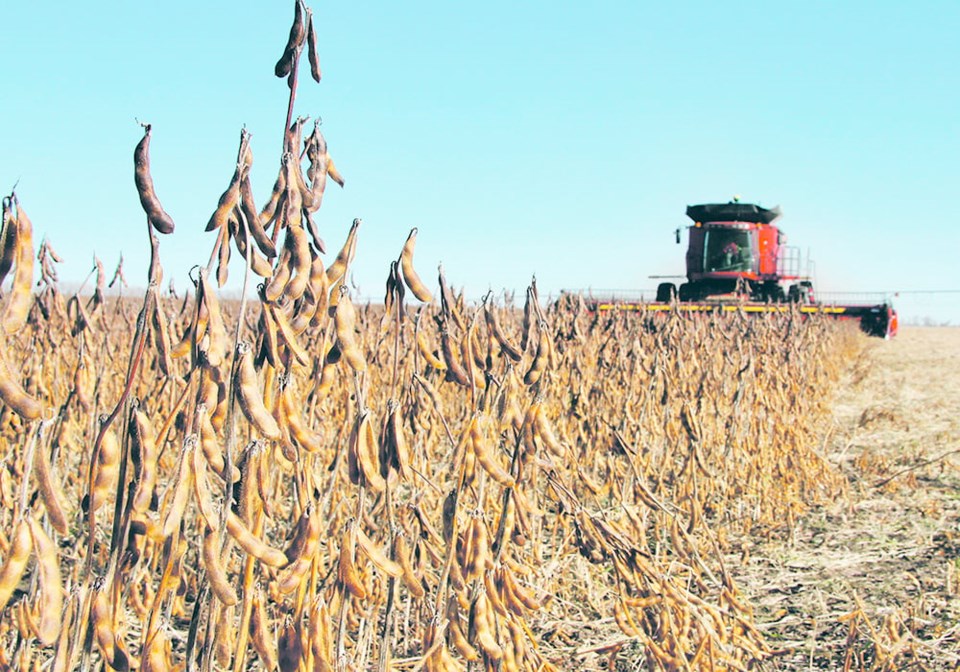SASKATOON — Bankers in the United States are wondering if soybean crush capacity will be overbuilt in that country.
They are leery that the sector may be following in the wobbly footsteps of the ethanol industry, which ended up with massive amounts of excess capacity in the 2000s.
“There is some concern that could happen again,” said Tanner Ehmke, lead economist for grains and oilseeds with CoBank, which is part of the U.S. Farm Credit System.
However, he has looked at the numbers and doesn’t think that is going to happen, at least in the short term.
“The balance sheets of today’s crush plants are very, very strong,” said Ehmke, .
If there is any short-term carnage, he expects that to happen in Argentina where the government is proposing to raise export taxes on soybean oil and meal.
However, he did note that U.S. crush margins have returned to historical norms after a sustained period of unusually high margins.
“There are plants at risk here,” he said.
The new plants are being built at a time of high material, labour and borrowing costs.
He is particularly worried about destination plants that are built far from where soybeans are grown. They could be facing high transportation costs.
Ehmke is also concerned about new plants that are clustered together in one area.
“A perfect example would be up in North Dakota. You’ve got two plants that are opening up 60 miles from each other,” he said.
Those plants could be facing high local basis levels because they will be vying against one another for available supplies.
Ehmke didn’t feel comfortable commenting about Canada’s similar situation with five new canola crush facilities set to increase capacity to 18 million tonnes from 11.2 million tonnes, a 61 percent increase.
Three of those new plants are being built in Regina.
CoBank is forecasting a 23 per cent increase in U.S. soybean crush capacity by 2026.
Those plants will be facing stiff competition from imported feedstocks.
Soybean oil accounts for 35 per cent of monthly feedstock use by the biodiesel and renewable diesel sectors, down from 50 per cent a year ago.
Tallow has climbed to 20 per cent of feedstock use, while yellow grease and used cooking oil make up another 20 per cent. The remaining 10 per cent belongs to corn oil and canola oil.
Canada shipped 2.86 million tonnes of canola oil to the U.S. in 2023, and 1.54 million tonnes of that was used to make biofuel. Ehmke thinks the U.S. could import 3.5 million tonnes in 2024.
Imports soared after the U.S. Environmental Protection Agency approved canola oil as an eligible feedstock for renewable diesel in December 2022.
However, Canada is facing new competition in its biggest U.S. renewable diesel market. In December 2023, California’s Air Resources Board approved soybean imports from Argentina into its Low Carbon Fuel Standard program.
Argentina is the world’s largest soybean oil exporter. The U.S. Department of Agriculture is forecasting it will ship out 4.8 million tonnes of the product in 2023-24.
By comparison, Canada is expected to export 3.6 million tonnes of canola oil this year.
Ehmke believes only about half of Argentina’s soybean oil is eligible for California’s LCFS due to land use concerns.
Canola oil has a better carbon intensity score than soybean oil, and Canada also has a proximity advantage over Argentina, so he doesn’t believe it will be too much of a competitive threat.
As well, the demand from the renewable diesel sector is expected to be so strong that there will be growth in all feedstock imports.




